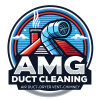Well-defined steps make exhaust maintenance repeatable, auditable, and effective. In Somerville, New Jersey, kitchens range from cozy cafés to high-volume restaurants, but all benefit from a clear, safety-first process for cleaning hoods, ducts, and fans. The sequence below focuses on preparation, thoroughness, and verification so your team knows exactly what to do and when. For complex systems and hard-to-reach ductwork, professional kitchen exhaust hood cleaning helps ensure every section is addressed and documented.
Step 1: Plan and Prepare
Choose a time that avoids conflicts with service. Notify staff, power down the line, and let equipment cool. Protect adjacent equipment, floors, and food-contact surfaces with coverings and absorbent mats. Confirm safe access to rooftops or exterior walls and protect the fire suppression system as required.
Step 2: Assemble Tools and PPE
- Degreaser formulated for commercial kitchen residues.
- Scrapers, brushes, and pads compatible with stainless steel.
- Hot water or pressure washing equipment with containment.
- Wet/dry vacuum and absorbent materials.
- Gloves, eye protection, and non-slip footwear.
Step 3: Remove and Treat Filters
Take out baffle filters and soak them in an appropriate degreasing solution. Agitate as necessary, then rinse thoroughly and allow to dry. Inspect for dents or warping that impair performance. Replace damaged filters to maintain capture efficiency and proper drainage.
Step 4: Scrape and Degrease Hood Interiors
Use scrapers and degreaser to remove heavy deposits from the hood canopy and plenum. Pay attention to rivets, seams, corners, and the transition to the duct. Work methodically to avoid pushing residue deeper into inaccessible areas. Maintain containment to prevent runoff.
Step 5: Open Access Panels and Address Ductwork
Access to elbows, vertical runs, and horizontal sections is vital. Open panels and remove deposits using brushes, scrapers, and hot water where appropriate. Move from top to bottom to avoid recontamination. If access panels are missing or damaged, plan to repair or install them before the next cycle.
Step 6: Service the Exhaust Fan
Safely reach the rooftop or exterior fan. Verify that hinges are present and functional, then clean the housing, blades, and shroud thoroughly. Check for belt wear, unusual vibrations, and noise. Ensure that grease discharge onto the roof is captured and does not threaten the membrane or drainage.
Step 7: Rinse, Collect, and Dispose
Rinse with hot water when appropriate, collecting all residue with containment devices. Separate solids from liquids and dispose of waste responsibly. Keep floors dry to eliminate slip hazards and allow time for all surfaces to air out before reassembly.
Step 8: Reinstall and Reassemble
Return baffle filters in the proper orientation, ensuring a snug fit and correct drainage. Reinstall grease cups and trays. Remove coverings from nearby equipment and wipe surfaces clean. Conduct a visual inspection to ensure no residue remains on exterior hood surfaces.
Step 9: Test and Verify Operation
Restore power to the fan and verify airflow. Listen for unusual noises and check for vibration. Open access panels to spot-check internal cleanliness. Document the service date, areas cleaned, and any repairs or recommendations.
Step 10: Maintain Between Cycles
Daily wipe-downs and frequent filter maintenance reduce grease accumulation and make deep cleanings faster and more effective. Assign responsibility for routine tasks and keep a visible log of actions to build accountability.
Common Pitfalls and How to Avoid Them
- Skipping access panel cleaning leaves dangerous deposits out of sight.
- Using the wrong pads can scratch stainless and collect residue.
- Rinsing without containment creates slip hazards and environmental concerns.
- Ignoring unusual fan noise can lead to costly failures.
- Assuming exterior shine equals internal cleanliness undermines safety.
Timing and Frequency in Somerville Kitchens
Set intervals based on menu, volume, and equipment. Wok-heavy and charbroiler lines typically need more frequent service than oven-centric or lower-volume kitchens. Track grease levels and airflow indicators to adjust timing rather than relying on fixed dates alone.
Documentation That Stands Up to Scrutiny
Record service details, photos when possible, and notes about fan condition, access panels, and roof containment. Detailed documentation demonstrates preventive care to staff, management, and inspectors, and it helps you anticipate repairs before they disrupt service.
Mid-Process Review
Halfway through a service cycle, perform a quick filter and hood check. If buildup is accelerating due to seasonal menu changes or increased volume, move the next appointment forward. Keeping pace with actual conditions prevents hardened deposits that are harder and riskier to remove. When needed, schedule professional kitchen exhaust hood cleaning to restore optimal conditions across the entire system.
Frequently Asked Questions
Q: How long does a full cleaning take? A: Timing depends on system size, access, and grease levels. Planning during off-hours and preparing the space reduces total downtime.
Q: Should we replace or clean baffle filters? A: Clean regularly and replace when bent, corroded, or no longer draining properly.
Q: What are signs of airflow problems? A: Persistent smoke or steam near the line, unusual fan noise, or a hot, stagnant kitchen environment.
Q: How do we protect the roof? A: Use grease containment, avoid overspray, and inspect after each service to remove residue promptly.
Q: Is hot-water pressure washing always required? A: Not always. Some sections respond well to scraping and chemical degreasing; choose methods based on material and buildup.
Q: What if access panels are missing? A: Install them. Without access, thorough cleaning and inspection are not possible.
Put the Steps Into Action
With a clear sequence, your Somerville kitchen can maintain safer conditions, stable airflow, and a more comfortable work environment. Align daily habits with scheduled deep services and keep thorough records. When it is time for a full reset from hood to fan, book professional kitchen exhaust hood cleaning and keep your operation inspection-ready, season after season.

